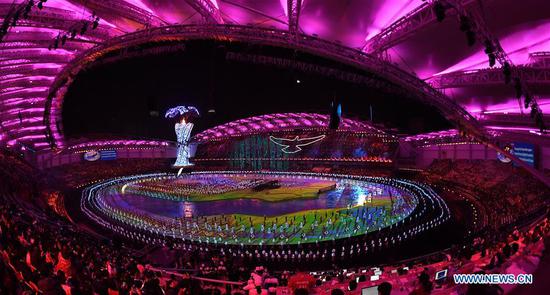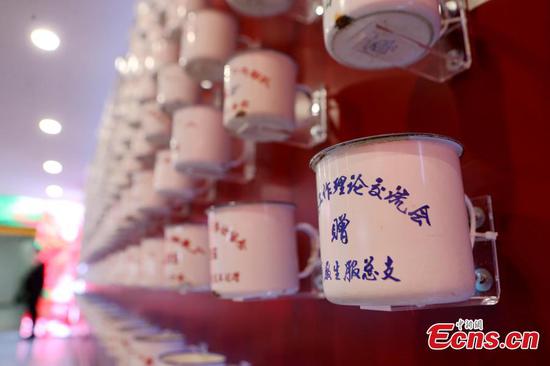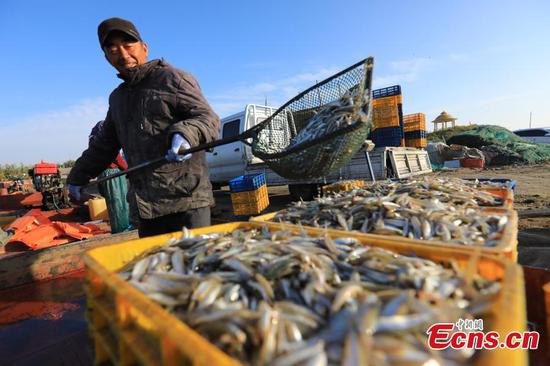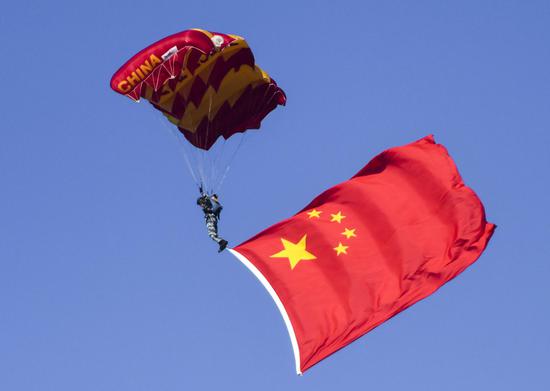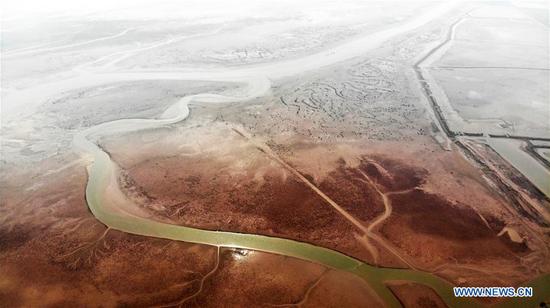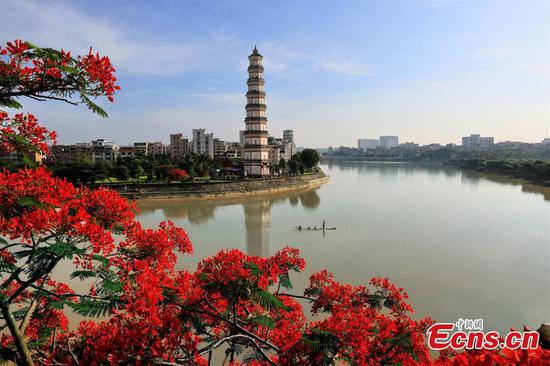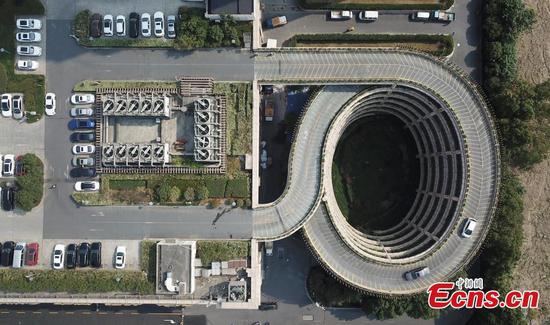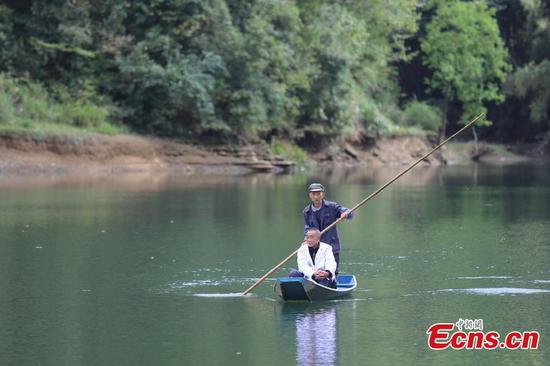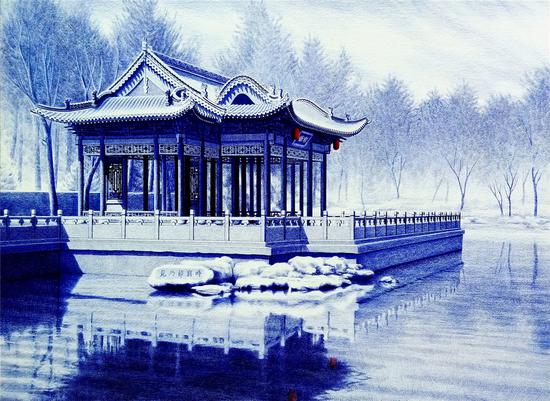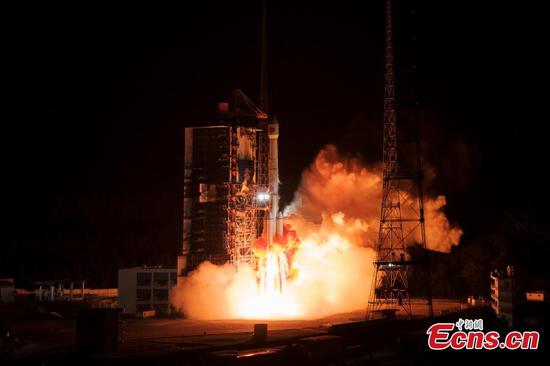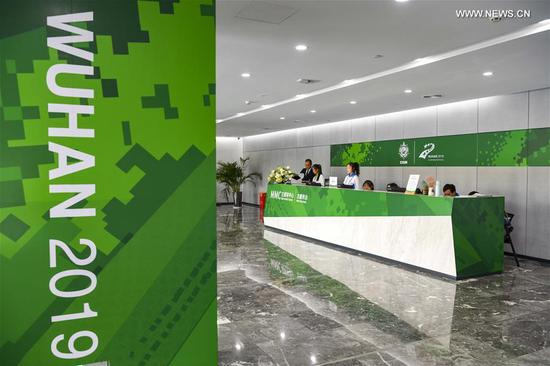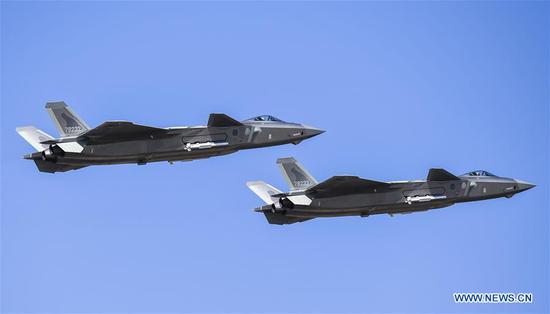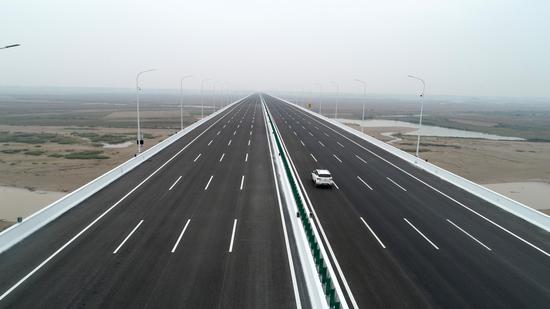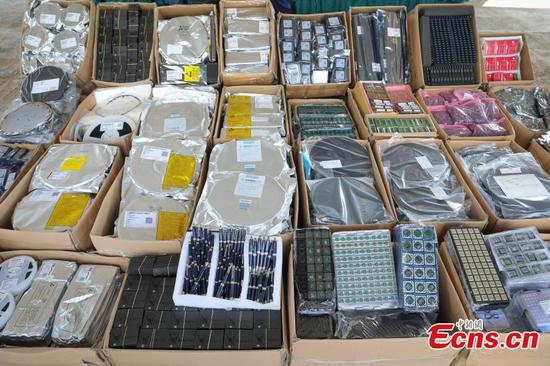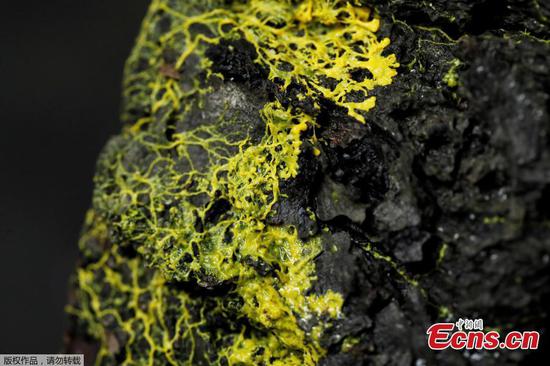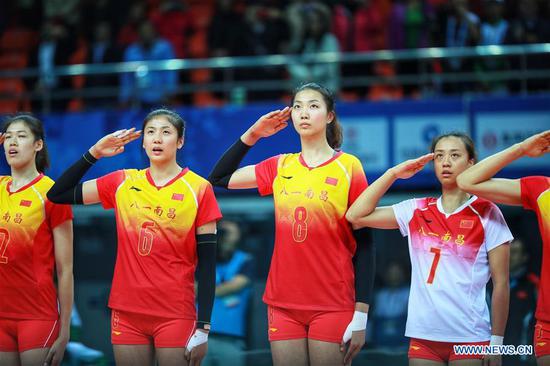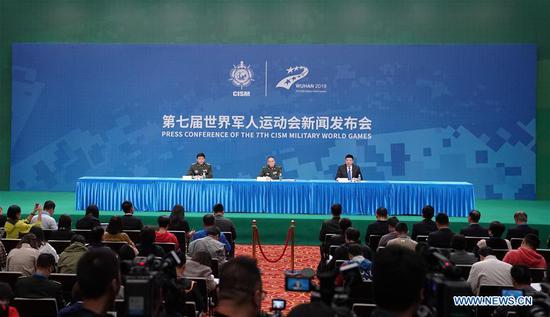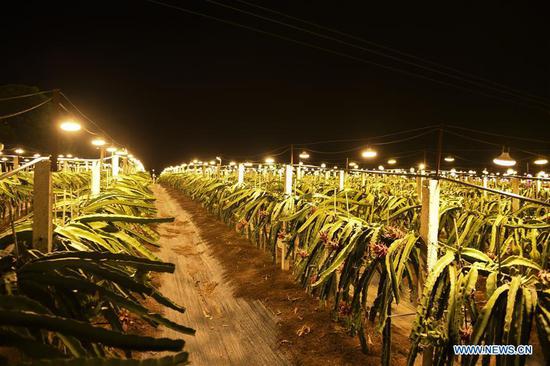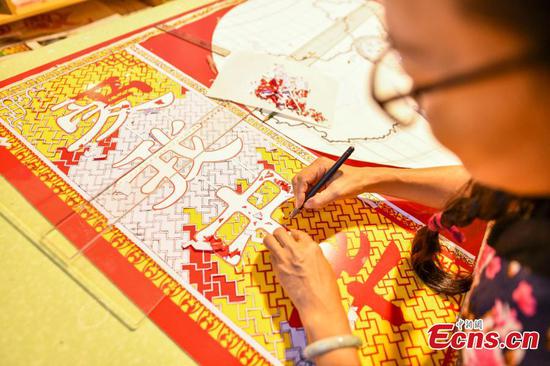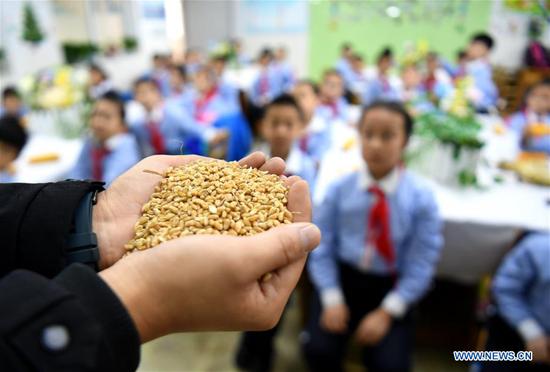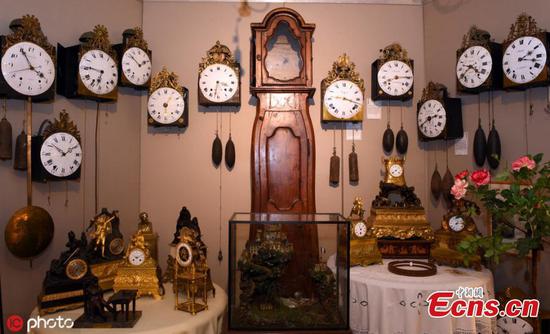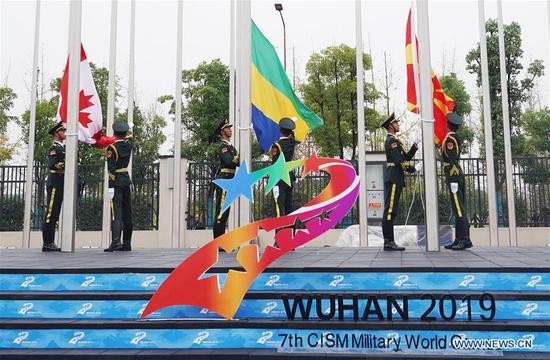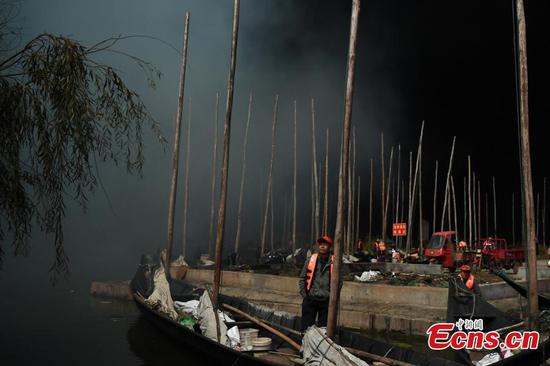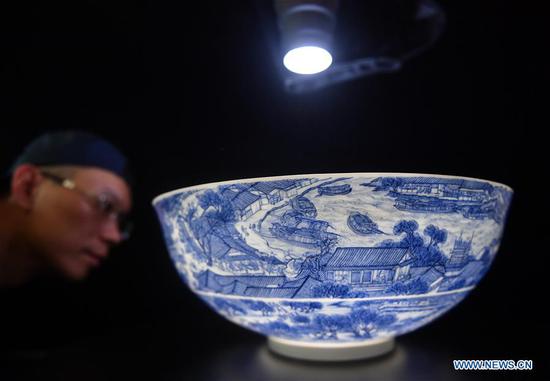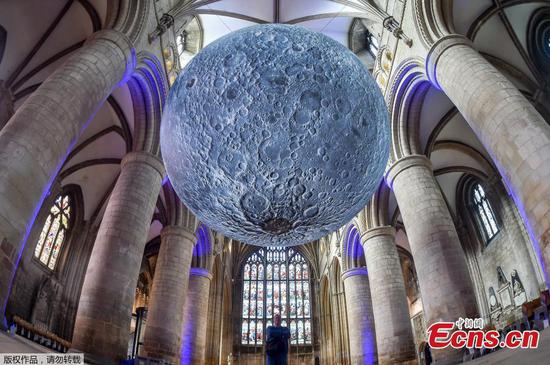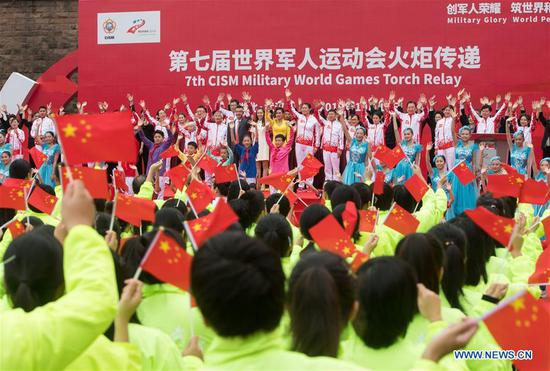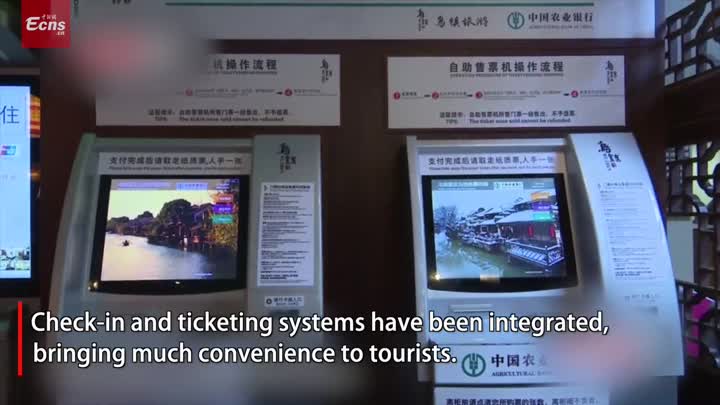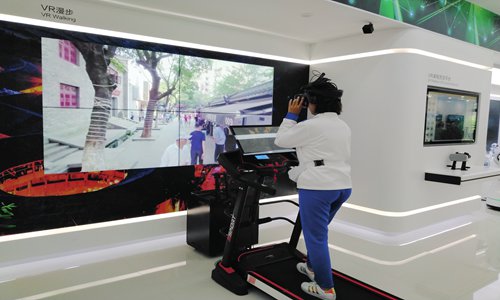
A visitor tries out VR walking in Nanchang, capital of East China's Jiangxi Province during the 2019 World Conference on VR Industry on Saturday. (Photo: Li Qiaoyi/GT)
A standardization institute under China's Ministry of Industry and Information Technology (MIIT) revealed Sunday at a virtual reality (VR) conference that a dozen key standards at national and industry levels in the arena of VR are in the making.
China has taken the lead in the push for VR standardization, extending its prowess beyond VR device manufacturing, industry watchers said.
According to Zhao Xinhua, vice president of the China Electronics Standardization Institute (CESI), the institute has assisted relevant government departments and industry alliances in initially creating a mechanism for VR standards.
CESI is working with the industry to push for the formulation of a dozen key national and industry standards. One of the standards applied to VR terminology and content would play a fundamental part in the industry. The standard is set to have direct implications for the creation, storage and transmission of VR content and its perceived quality, he told a sub-forum at the 2019 World Conference on VR Industry on Sunday at Nanchang, capital of East China's Jiangxi Province.
The country has moved swiftly toward developing VR standards, said Chen Xi, general manager of Shenzhen Hualong Xunda Information Technology Co.
With some of the sector still growing at a wild pace, meaning it's yet to mature, the standardization push is fairly pioneering, Chen, also member of the China Virtual Reality Industry Association, told the Global Times on Sunday.
The standardization move follows remarks by high-ranking officials hoping for new momentum arising from VR technology that exemplifies China's switch toward innovation-driven growth.
Speaking at the opening of the conference on Saturday, Vice Premier Liu He stated that the global VR sector has moved into a rapid development period from the takeoff phase.
He cited the rapid convergence of VR technology and artificial intelligence, big data, cloud computing and 5G, among other technologies, and the application of VR technology in a wide range of industries such as manufacturing, education, healthcare and travel.
The most advanced companies, the most active investors and the most creative people are actively engaged in the VR space, Liu said, noting that among China's efforts to foster a healthy development of the VR sector are an emphasis on basic research and importance attached to intellectual property (IP) protection, especially when it comes to small and medium-sized enterprises.
Billing the nation as one of the world's most vibrant regions for VR innovation and one of the places where VR technology is widely accepted and its potential for growth is great, Minister of Industry and Information Technology Miao Wei highlighted the formulation of standards and international cooperation in his speech at the opening of the conference.
"The [Chinese] government shows a deep interest in [setting] standards. It's a good thing," Leonardo Chiariglione, the founder and chairman of MPEG, an organization that develops video- and audio-encoding standards, told the Global Times on Sunday.
He believes that Chinese companies have a bigger say than their global counterparts in defining industry standards due to their dominance in the manufacturing of VR gadgets.
For example, China produces 70 percent of high-end head-mounted VR devices globally, according to Miao from MIIT.
A push for standardization to unify elementary audio- and video-coding formats, which would be helpful in saving computing resources and keeping devices from overheating - one of the thorniest issues with the VR user experience, Bi Kaichun, an official with the MIIT, said at the sub-forum on Sunday.
In fostering VR industry growth, China is also contributing its solution to the world in standardization terms, he said.









